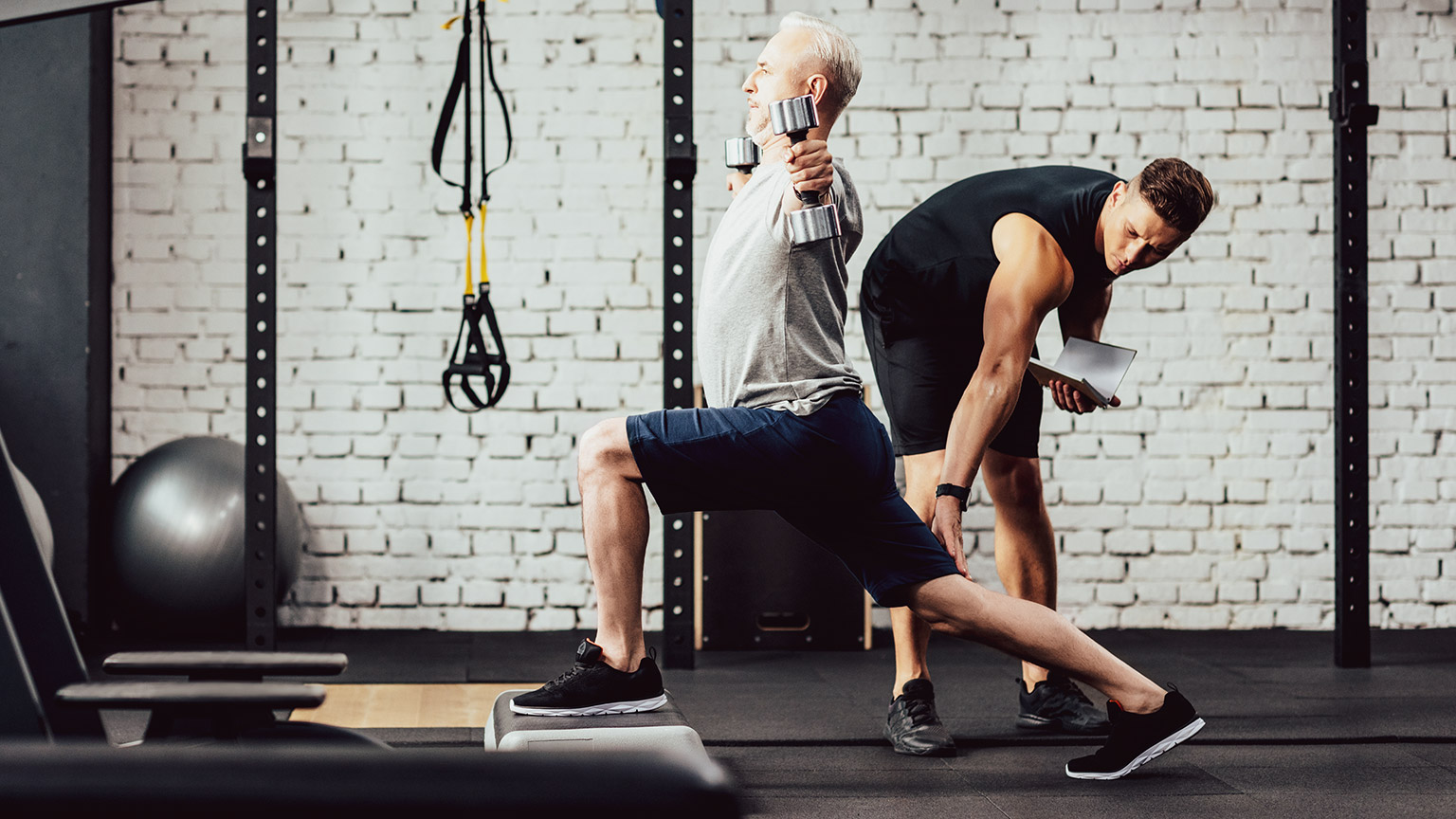As a personal trainer, it is important that you have an understanding of the theory behind exercise. This information is not only of benefit to you as a trainer and your understanding of scientific principles behind programming but also for your clients. You will find yourself (perhaps more than you imagine) sharing this information with your clients, helping them achieve a great understanding of what you are doing and why. Greater knowledge leads to greater understanding and with understanding comes trust.
In this topic you will learn about:
- kinetic chain exercises
- primal movement patterns
- grip types for barbells.
Terminology and vocabulary reference guide
As an allied health professional, you need to be familiar with terms associated with basic exercise principles and use the terms correctly (and confidently) with clients, your colleagues, and other allied health professionals. You will be introduced to many terms and definitions. Add any unfamiliar terms to your own vocabulary reference guide.
Activities
There are several practical activities in the topic and an end of topic automated quiz. These are not part of your assessment but will provide practical experience that will help you in your work and help you prepare for your formal assessment.
Before we get started, let us define several concepts that underpin much of your work as a personal trainer:
- resistance exercises
- cardiovascular exercises
- flexibility exercises
- warm up and cool down exercises.
Resistance exercises
Resistance training is often also referred to as strength training. It refers to exercises (often called anaerobic or intense) that use resistance to make the muscles contract. Resistance training builds strength and improves muscle tone and size as well as bone mass and density. The health benefits include:
- protecting bones and joints from injury
- maintaining flexibility
- improving balance
- helping people stay independent
- increasing bone density.
Equipment includes:
- none (bodyweight)
- Barbells, dumbbells. resistance bands, medicine balls, kettlebells, and machines.
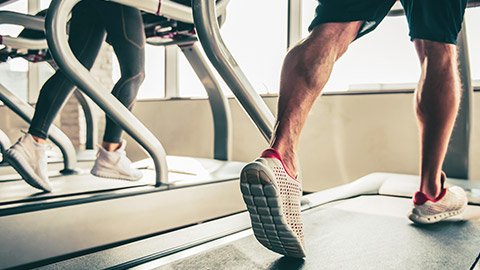
Cardiovascular exercises
Cardiovascular exercises refer to any activity that raises the heart rate. They generally use large muscle movements and exercises are done over a sustained period of time, such as walking, sprinting, running, cycling, and circuit training. Cardiovascular exercises make the heart muscles stronger. The health benefits include:
- reducing heart disease
- lowering blood pressure
- lowering cholesterol
- increasing bone density
- They are also known to decrease the risk of osteoporosis and strengthen the lungs.
Flexibility exercises
Flexibility refers to the range of movement in a specific joint (or joints) and muscle length that allows bending. Not all joints are flexible. Activities and exercises that lengthen or stretch the muscles have multiple health benefits including:
- reducing balance problems
- preventing back pain injuries
- avoiding injuries.
- Whilst they may not increase strength or endurance they increase movement needed for other exercises.
And as the old saying goes:
If you don't use it, you lose it!
Warm up and could down exercises
Warm ups prepare your body for aerobic activity by gradually 'revving up' the Cardiovascular system to increase blood flow to muscles and raise the temperature of the body. Cool downs allow the body to return to the pre-exercise heart rate and blood pressure.
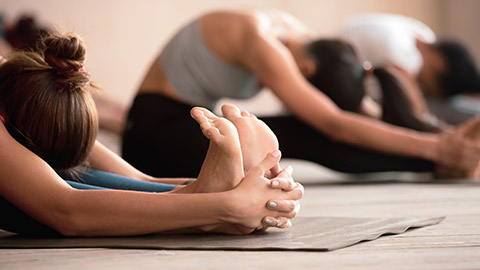
Kinetic chain exercise is physical exercise used in activities including aerobics, intense exercise, weight lifting, Pilates, yoga or kickboxing. Sometimes it is used as in physiotherapy and rehabilitation. There are two types of kinetic chain exercises:
- Open kinetic chain exercises
- Closed kinetic chain exercises.
What are open kinetic chain exercises?
These are exercises where the hand or foot (distal points) are free to move during the movement. For example:
- leg extensions/leg curls
- bench press
- overhead press
- leg press.
What are closed kinetic chain exercises?
These are exercises where the hand or foot (distal points) are fixed and not able to move during the movement. Generally, it is the person's central core (proximal segments) that move. For example:
- squats
- lunges
- push-ups
- pull-ups.
Primal movement refers to the basic and natural movements and tasks that have evolved over time by our ancestors and that we learn from a young age. For example, learning how to sit, roll, crawl, and stand can be classified as open kinetic or closed kinetic movements. Let us look at common primal movement patterns including squats, lunges, push, pull, twist, and hinge.
Pattern 1: Squat. A squat is a movement pattern where you plant both feet on the ground, then bend your legs to lower your body down while keeping your chest up and lower back straight. As we age, it may become harder to squat which can impact a person’s ability to engage in normal activities such as gardening, or functional activities such as getting in and out of a chair.
Pattern 2: Lunge. A lunge is a single-leg exercise, requiring one leg to step forward, both legs bending at the knee at right angles and thigh/shin parallel to the ground. In this movement, reliance is typically on the front leg which is performing the majority of the work while the other leg is more of a stabiliser. A lunge can be performed in any direction, front, back, and sideways. This motion is typically performed when stepping upstairs, over an object or lunging forward to catch a ball for example. This movement requires balance and can become more difficult as we age, reducing the functional capacity to perform daily living activities.
Pattern 3: Push. A push involves pushing an external weight away from the body or the body away from a fixed object, as seen when performing a push-up. A push movement can be performed in both the vertical and horizontal plane. For example, a shoulder press would be a vertical push and a chest press would be an example of a horizontal push.
Pattern 4: Pull. A pull movement, opposite to a push, results in bringing an object closer to the body or pulling your centre of mass closer to an object (as seen in a pull-up exercise). The pull movement can be classified as a horizontal pull or a vertical pull. A lat pulldown or pull up exercise would be an example of a vertical pull and a seated row exercise would be an example of a horizontal pull.
Pattern 5: Twist. A twisting movement, unlike the other primal movements which are performed in the sagittal and frontal planes, is performed in the transverse plane. This movement is seen when twisting to reach or place an object, however, many sporting movements also have an element of twisting such as, running, throwing or catching, and walking.
Pattern 6: Hinge. A hinge movement requires the ability to flex at the hips and is essential to athletic performance. The hinge is a very common movement used in many aspects of daily living such as picking an object up such as a bag of shopping, a heavy suitcase or a child. In an exercise environment, a deadlift would be an example of a hinge based exercise.
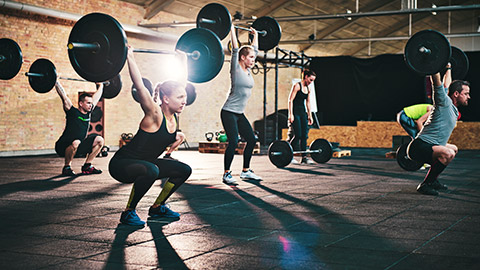
Before we look at the different grips, let us define what a barbell is. A barbell is a popular piece of exercise equipment used in weight training, bodybuilding, weightlifting, and powerlifting. Typically, a barbell is made up of a long bar, usually with weights attached at each end. Two common types found in most gyms and considered the standard for weight-lifting are:
- the standard barbell
- the Olympic barbell
There are other more specialised barbells that may be used for specific movements or styles of training with barbells. They may also be used to target specific areas of the muscles.
Barbells are often of different weights, therefore, it is important to be aware of the weight of the barbell you are using to ensure you set the weight appropriately for your client. For example, if you have determined that your client is to be performing a 15Kg barbell squat and your barbell is 10Kg, you need only add a further 5Kg. This may seem obvious however it is a factor often forgotten in the early days and suddenly you find your client is lifting 25Kg for example instead of 15Kg, oops!
Look at the following images and note precisely where the hands and fingers are positioned.
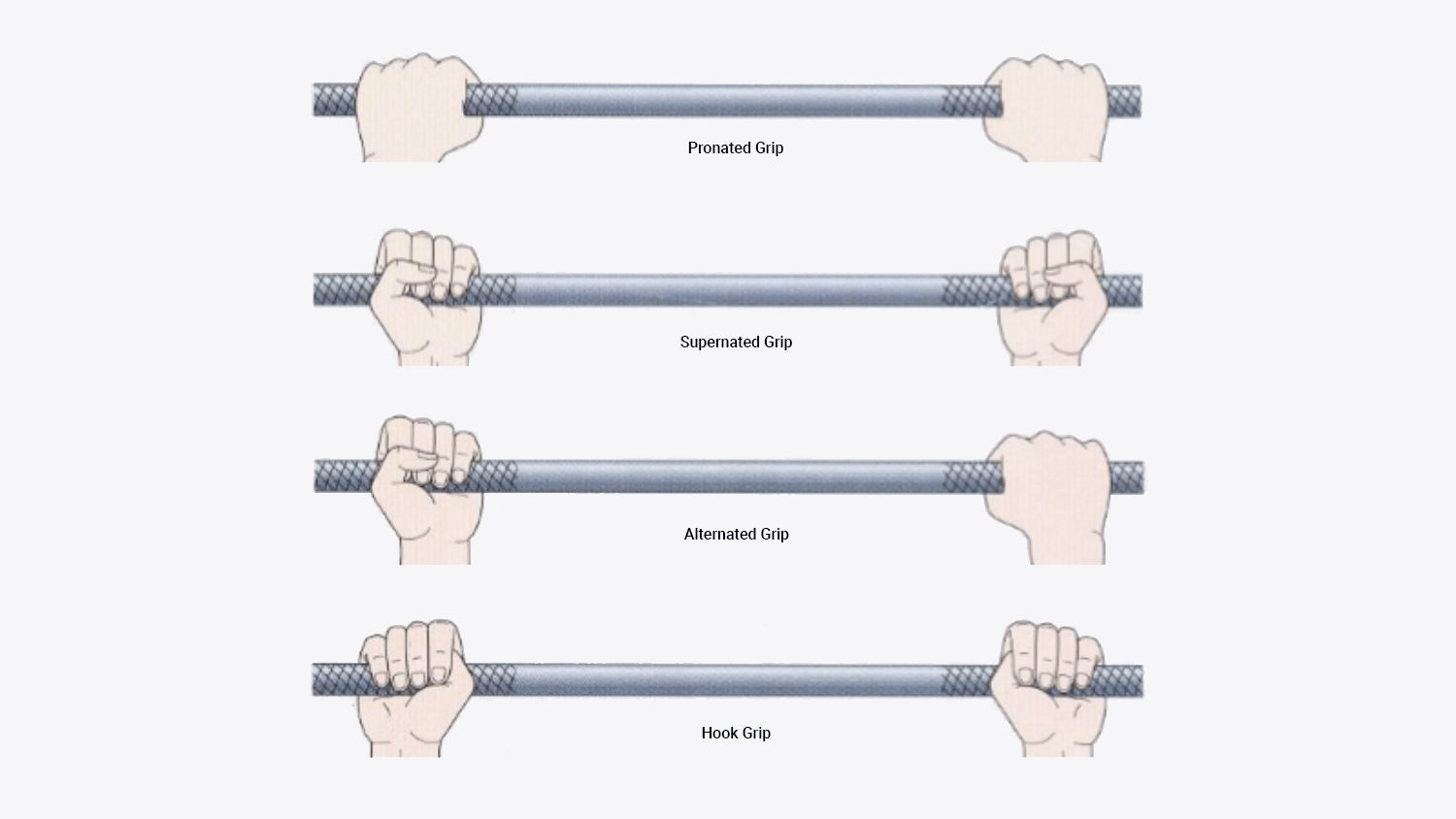
Vocabulary reference guide
You have learned a lot of new terms already and there are more to come! You must be familiar with many of these terms. In your own words, write a short definition for the following terms, including benefits:
- resistance training
- cardiovascular exercises
- flexibility exercises.
Check your definitions against the information in the learning materials.
In this topic you learnt about:
- kinetic chain exercises
- primal movement patterns
- grip types for barbells.
